Related Research Articles

Agostino Carracci was an Italian painter, printmaker, tapestry designer, and art teacher. He was, together with his brother, Annibale Carracci, and cousin, Ludovico Carracci, one of the founders of the Accademia degli Incamminati in Bologna. This teaching academy promoted the Carracci emphasized drawing from life. It promoted progressive tendencies in art and was a reaction to the Mannerist distortion of anatomy and space. The academy helped propel painters of the School of Bologna to prominence.
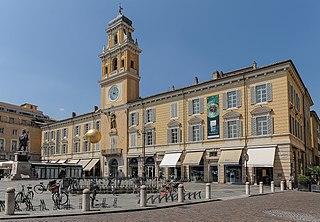
Parma is a city in the northern Italian region of Emilia-Romagna known for its architecture, music, art, prosciutto (ham), cheese and surrounding countryside. With a population of 198,292 inhabitants, Parma is the second most populous city in Emilia-Romagna after Bologna, the region's capital. The city is home to the University of Parma, one of the oldest universities in the world. Parma is divided into two parts by the stream of the same name. The district on the far side of the river is Oltretorrente. Parma's Etruscan name was adapted by Romans to describe the round shield called Parma.

Sisto Badalocchio Rosa was an Italian painter and engraver of the Bolognese School.
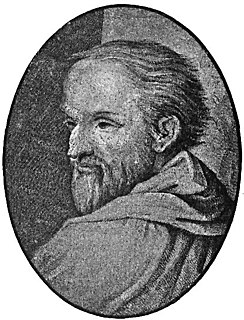
Antonio Allegri da Correggio, usually known as just Correggio, was the foremost painter of the Parma school of the High Italian Renaissance, who was responsible for some of the most vigorous and sensuous works of the sixteenth century. In his use of dynamic composition, illusionistic perspective and dramatic foreshortening, Correggio prefigured the Baroque art of the seventeenth century and the Rococo art of the eighteenth century. He is considered a master of chiaroscuro.

Annibale Carracci was an Italian painter and instructor, active in Bologna and later in Rome. Along with his brother and cousin, Annibale was one of the progenitors, if not founders of a leading strand of the Baroque style, borrowing from styles from both north and south of their native city, and aspiring for a return to classical monumentality, but adding a more vital dynamism. Painters working under Annibale at the gallery of the Palazzo Farnese would be highly influential in Roman painting for decades.

Carlo Cignani was an Italian painter. His innovative style referred to as his 'new manner' introduced a reflective, intimate mood of painting and presaged the later pictures of Guido Reni and Guercino, as well as those of Simone Cantarini. This gentle manner marked a break with the more energetic style of earlier Bolognese classicism of the Bolognese School of painting.

Girolamo Francesco Maria Mazzola, also known as Francesco Mazzola or, more commonly, as Parmigianino, was an Italian Mannerist painter and printmaker active in Florence, Rome, Bologna, and his native city of Parma. His work is characterized by a "refined sensuality" and often elongation of forms and includes Vision of Saint Jerome (1527) and the iconic if somewhat anomalous Madonna with the Long Neck (1534), and he remains the best known artist of the first generation whose whole careers fall into the Mannerist period.

Baldassare Franceschini, called Il Volterrano after his birth place Volterra and, to distinguish him from Ricciarelli, Il Volterrano Giuniore was an Italian late Baroque painter and draughtsman active principally around Florence and Volterra. He was mainly known for his frescoes, altarpieces and easel paintings for churches and palaces in Florence, Volterra and Rome. His subject matter was diverse and included portraits, biblical and mythological scenes, history paintings and allegorical compositions.

Giovanni Lanfranco was an Italian painter of the Baroque period.

Francesco Vanni was an Italian painter, draughtsman, printmaker, publisher and printer active in Rome and his native city of Siena.

Bartolomeo Schedoni was an Italian early Baroque painter from Modena.

Marcantonio Franceschini was an Italian painter of the Baroque period, active mostly in his native Bologna. He was the father and teacher of Giacomo Franceschini.

Sebastiano Ricci was an Italian painter of the late Baroque school of Venice. About the same age as Piazzetta, and an elder contemporary of Tiepolo, he represents a late version of the vigorous and luminous Cortonesque style of grand manner fresco painting.

The Galli-Bibiena family, or Galli da Bibiena, was a family of Italian artists of the 17th and 18th centuries, including:

Giuseppe Peroni was an Italian painter of the Baroque period.

Tommaso Aldrovandini was an Italian painter of the Baroque period. He mainly painted perspective views and architectural subjects (quadratura), in which the figures were painted by Marcantonio Franceschini and Carlo Cignani. He decorated churches, palaces, and theaters in Forlì, Verona, Venice, Parma, Turin, Ferrara, and Genoa, and especially in his native Bologna. Among his pupils was Giovanni Benedetto Paolazzi.
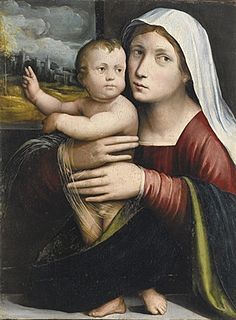
Giacomo Raibolini, also called Giacomo Francia or Jacopo Francia, was an Italian painter and engraver of the Renaissance period.
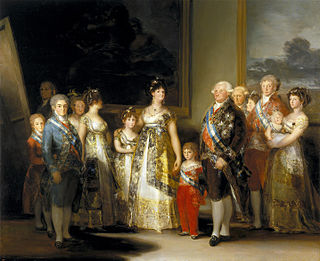
Charles IV of Spain and His Family is an oil-on-canvas group portrait painting by the Spanish artist Francisco Goya. He began work on the painting in 1800, shortly after he became First Chamber Painter to the royal family, and completed it in the summer of 1801.
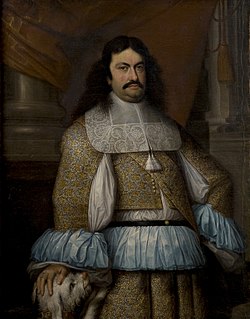
Frans Denys or Frans Denijs, was a Flemish Baroque painter mainly of portraits. After a successful career in Antwerp as a portrait painter to an elite clientele he travelled abroad and worked as a court painter in Germany and Italy.

The Bardi Altarpiece, is an Italian Mannerist painting by the Italian painter Parmigianino, dating from c. 1521 and housed in the church of Santa Maria at Bardi, Emilia-Romagna, Italy.
References
- Bryan, Michael (1889). Walter Armstrong & Robert Edmund Graves (ed.). Dictionary of Painters and Engravers, Biographical and Critical. Vol. II (L-Z). London: George Bell and Sons. pp. 325–326.